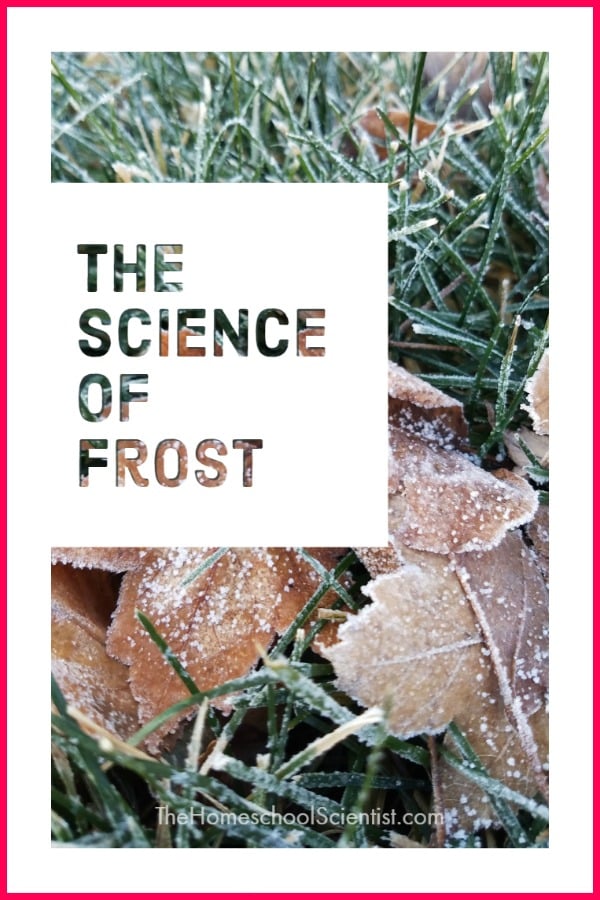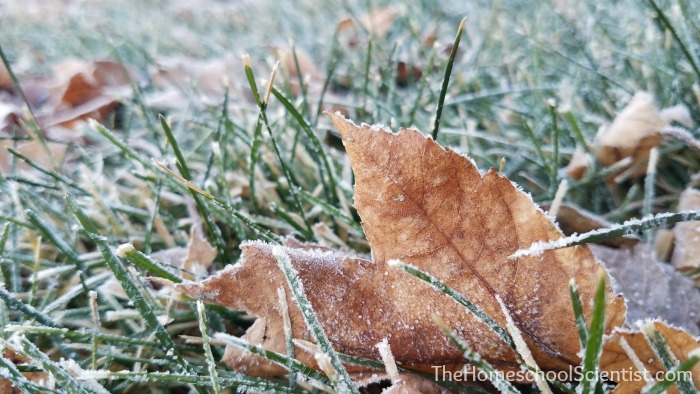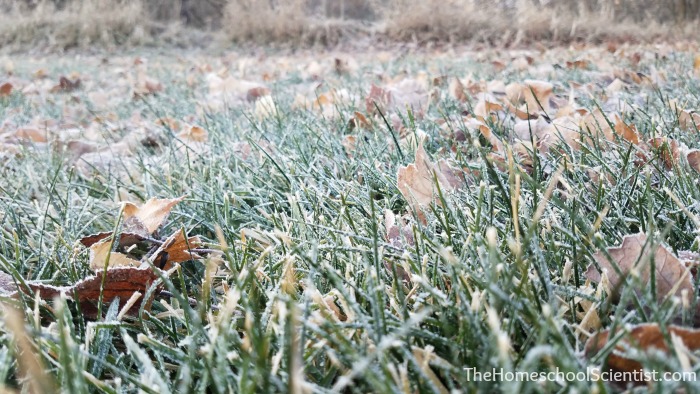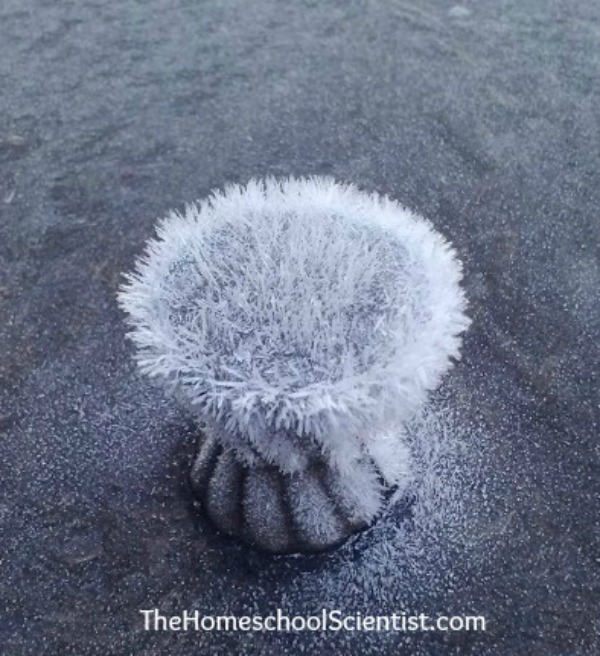The Science Of Frost

We’ve been waking up to a frost covered lawn around here for a few weeks. We’ve had a couple hard freezes that covered the trees and plants ending the summer growing season. Sigh….it’s that time of year.
I have to admit that seeing everything clad in frosty white is pretty. The kids like to watch the frost disappear as the sun moves into the shadows caused by houses and trees and melts the frost into glistening drops of water.

The kids wanted to know how the frost got there. I told them “Science is everywhere!”
What Is Frost?
Think of frost as frozen dew. We’ve all walked across the lawn in the morning and experienced the wet grass even though it didn’t rain the night before. That’s dew.

Dew is formed when the temperature of the atmosphere lowers to a point where it can no longer hold all of its water. The water then condenses, or turns into liquid, and collects onto surfaces. The temperature at which this happens is called the dew point.
The dew point is dependent upon relative humidity. If the relative humidity is high, then the dew point will be close to the actual temperature. For example, if the temperature is 68 and the relative humidity is 100?, then the dew point will be 68, as well.
When the dew point gets below freezing, it is called the frost point. This is when frost occurs. The water in the atmosphere collects on surfaces and forms ice crystals. This might occur on plants, windows, metal, and any other solid surface that might have a temperature lower than freezing, also.
Related post: What Is A Frost Quake?
Frost Close Up

The ice crystals that make up frost grow out from the solid surface as more water from the air is deposited. The size of these crystals depend on time, temperature and the humidity of the air. This past weekend, we noticed a heavier layer of frost than usual. We found these amazing, huge ice crystals on metal and glass outside. I love the way the frost looks like hair. When frost builds like this it is called hoar frost.
The wonder of frost is just another way to teach that science is everywhere! Visit the other posts in the Science Is Everywhere series.

Weather Links
Using Clouds To Predict The Weather
Hurricane Lesson Resources and Activities
Weather Science Pinterest Board


